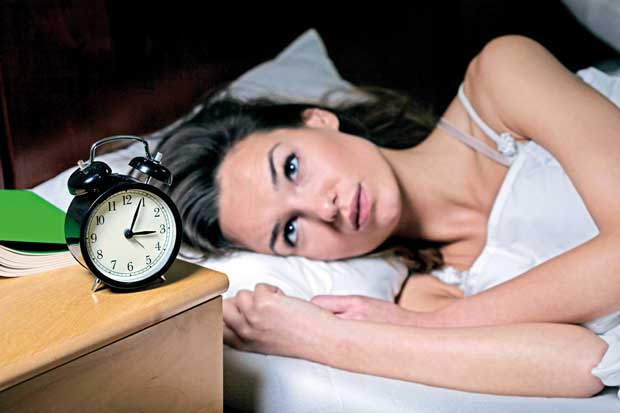08 Sep 2017 - {{hitsCtrl.values.hits}}

 It’s essential for every living organism to have rest and proper sleep after engaging in hundreds of daily activities. A healthy sleep is defined as the duration and quality of sleep which optimizes an individual to maintain the maximum alertness while being awake. Generally, an adult needs around 8 hours of sleep, even though the individual requirement may vary based on several factors. Children and adolescents usually need more than 8 hours of sleep, but after the age 4, the necessity will gradually lessen and reach approximately 8 hours.
It’s essential for every living organism to have rest and proper sleep after engaging in hundreds of daily activities. A healthy sleep is defined as the duration and quality of sleep which optimizes an individual to maintain the maximum alertness while being awake. Generally, an adult needs around 8 hours of sleep, even though the individual requirement may vary based on several factors. Children and adolescents usually need more than 8 hours of sleep, but after the age 4, the necessity will gradually lessen and reach approximately 8 hours.
There are various types of sleeping disorders where Insomnia and Sleep Apnea are known to be two of the commonest.
What is Insomnia?
Being the commonest type of sleep disorder, Insomnia is defined as the difficulty to fall asleep or the difficulty in maintaining sleep every night or most nights. This condition prevails despite having adequate opportunity to sleep. Other variable symptoms and signs of this disorder include waking up too early in the morning, the inability to fall back to sleep even if necessary and going through episodes of uncomfortable or disturbed sleep. Consequences of Insomnia may vary from one person to another and include irritability, tiredness and poor concentration.
Insomnia can occur without any clear etiology, due to stress, anxiety, nicotine, caffeine, excessive alcohol, drug abuse, over-the-counter drugs, menopause, hormonal disturbances in women, chronic pain etc. But the condition can also be a symptom associated with several mental and physical health conditions like depression, hypothyroidism, high blood pressure, heart diseases, asthma, arthritis and nasal allergies or sinusitis. Furthermore, Insomnia can also be linked with other sleeping disorders like Sleep Apnea and restless leg syndrome.

There are several types of Insomnia such as; general Insomnia which usually last one night up to several weeks, chronic insomnia lasting for months to years, Transient insomnia lasting for a short time and intermittent insomnia which occasionally recurs with comparatively shorter episodes of sleeplessness.
The modalities of treatment available for individuals with Insomnia, mainly depend on the root cause which results in disturbed sleep. However, in addition to obtaining treatment for underlying conditions, it is important to make lifestyle modifications such as avoiding distractions during sleep (noise, television, music), scrapping altogether or shortening the duration of naps during day time, consuming a light diet at night, refraining from having caffeine and nicotine and altering drugs. It’s essential to obtain medical advice and proper training to have a healthy sleep pattern.
Take home message
Insomnia is defined as a condition of broad range where an individual has trouble falling and maintaining sleep whereas Sleep Apnea is a physical condition which takes place when breathing of an individual gets interrupted during sleep.
Sleep Apnea will usually take place due to an underlying physical condition, but not as a result of anxiety or depression
Even though Insomnia can occur due to various mental health problems such as depression or mood swings like anxiety, Sleep Apnea will usually take place due to an underlying physical condition, but not as a result of anxiety or depression.

This is a serious and potentially life-threatening condition which is characterized by repetitive and brief disruptions of airflow while being asleep. Being a condition which owns a male predominance, Sleep Apnea is commoner in people over 40 years of age and often go undiagnosed in women.
Risk factors:
There are several types of Sleep Apnea where Obstructive Sleep Apnea is known to be the commonest. The cause for this condition is the blockage of the airway due to reasons such as excessive tissue content in obese people, narrowed air ways due to asthma and anatomical anomalies including enlarged tonsils or large uvula .
As far as the pathophysiology of Sleep Apnea is considered, disrupted air entry into the lungs through nose and mouth makes it difficult for an individual to breath. This results in an increased effort during respiration leading to a creation of a suction force in the upper airway tract. This whole scenario will result in the further collapsing of airways with a sound of involuntary snoring associated with a break in the airflow. Also, due to the low concentration of oxygen and increased concentration of carbon dioxide in the blood, the signals will be sent to the brain which will stimulate the relaxation of muscles in the airway from time to time. This process will result in episodes of normal sleep and sudden awakening associated with loud gasps.
Due to the fundamental pathophysiology mentioned above, individuals with Sleep Apnea will have a history of loud or frequent snoring, silent pauses during breathing, choking, gasping, daytime sleepiness, fatigue, insomnia, morning headaches and nocturia (awakening during sleep at night to go to the bathroom).
Eliminating the root cause and treating any underlying health condition play a major role in the management of Sleep Apnea. In addition, lifestyle modifications such as regular exercises, weight reduction, healthy diet and the quitting of smoking and alcohol will also help to improve the condition.
23 Dec 2024 2 hours ago
23 Dec 2024 3 hours ago
23 Dec 2024 6 hours ago
23 Dec 2024 7 hours ago